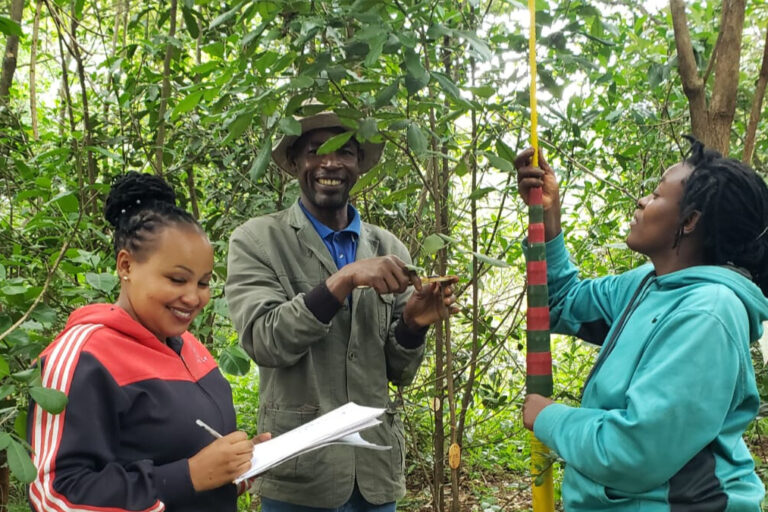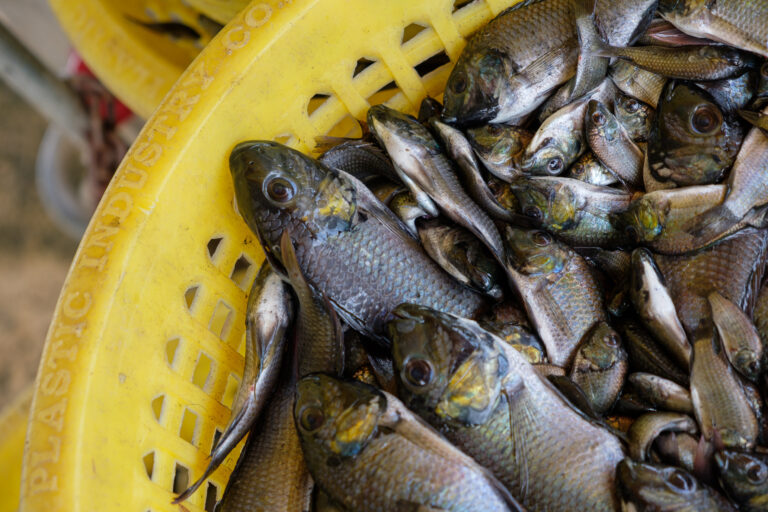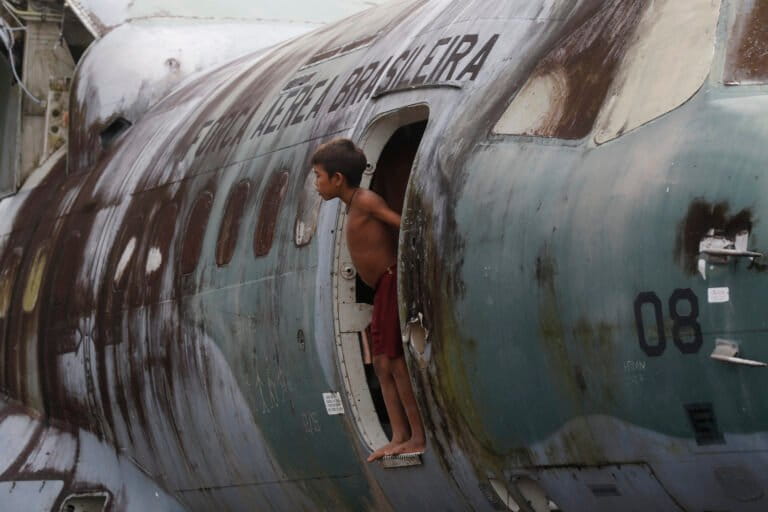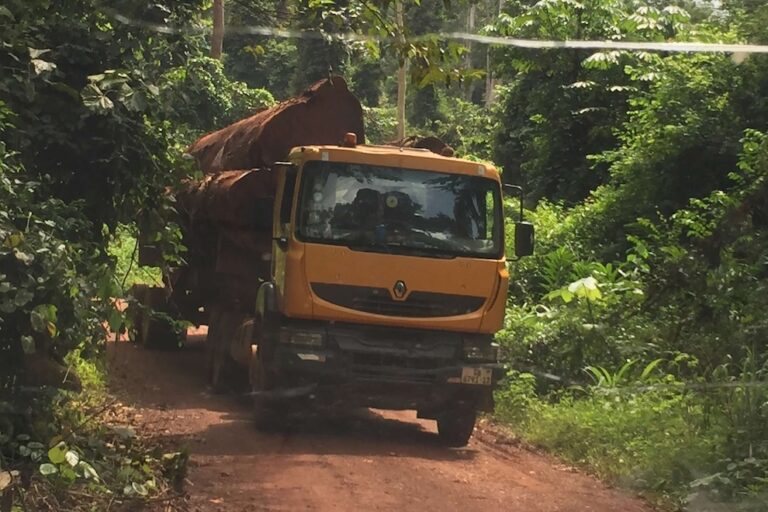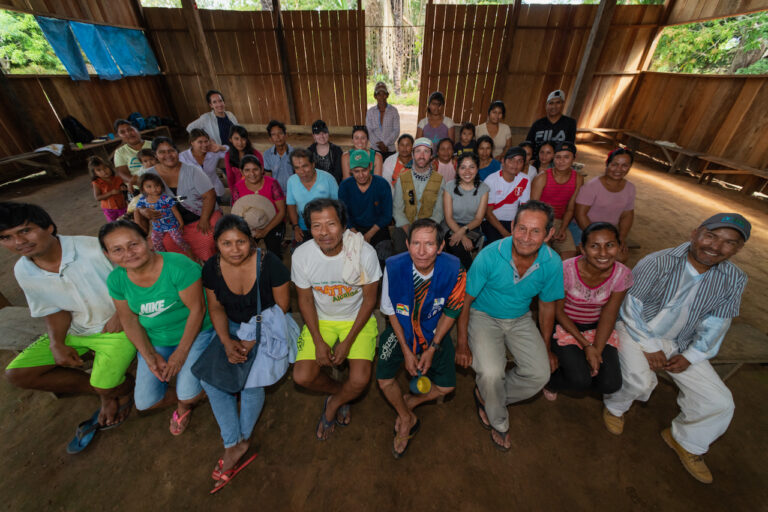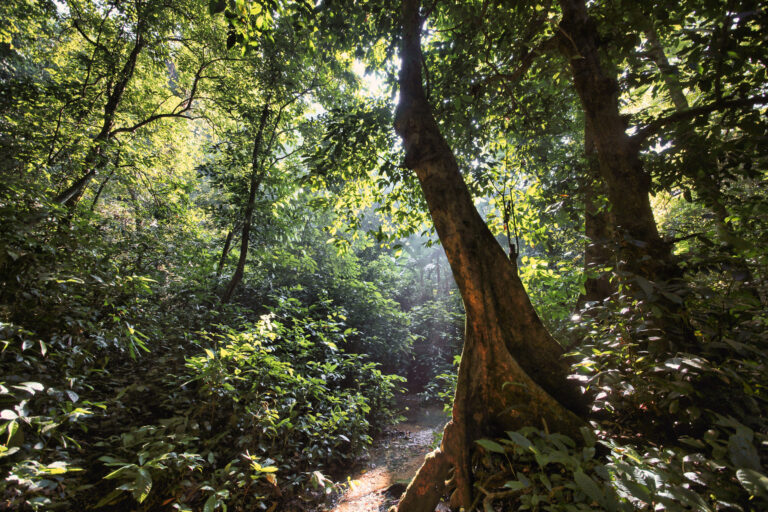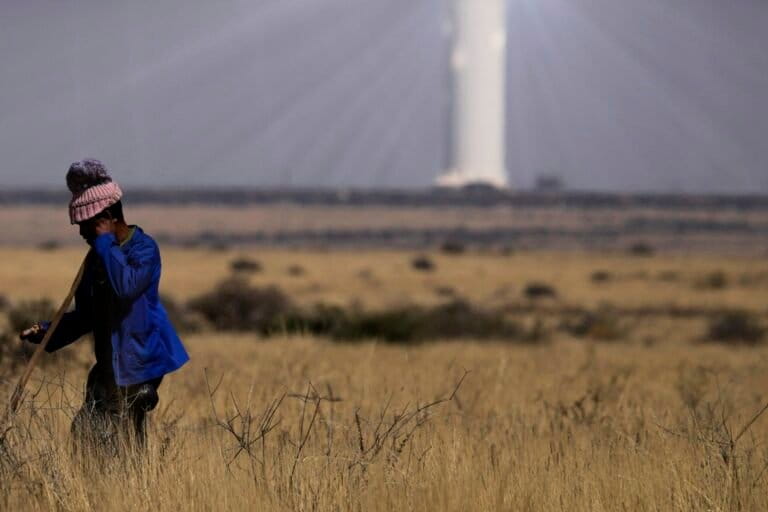- The Okapi Wildlife Reserve in northeastern Democratic Republic of Congo protects unique biodiversity, including approximately one-fifth of the global okapi population, the country’s largest forest elephant and chimpanzee populations and 17 primate species, and it safeguards forest access for the Indigenous Mbuti and Efe peoples.
- Deforestation in the reserve is accelerating, according to data from Global Forest Watch.
- Artisanal and semi-industrial mining is a grave threat to the reserve, leading to deforestation and pollution of waterways, particularly in the south of the reserve along the Ituri River and the National Road 4.
- A disagreement over the boundaries of the reserve between park authorities and the mining cadastre complicates law enforcement and requires resolution at the ministerial level.
The Okapi Wildlife Reserve in northeastern Democratic Republic of Congo (DRC) protects nearly 14,000 square kilometers (5,405 square miles) of tropical rainforest and is a UNESCO World Heritage Site.
It’s home to a treasure trove of wildlife: one-fifth of the global population of okapi (Okapia johnstoni); the DRC’s largest populations of forest elephants (Loxodonta cyclotis) and chimpanzees (Pan troglodytes); 17 species of primates, more than any other African forest; 10 species of forest antelope, including bongo (Tragelaphus eurycerus) and dwarf antelope (Nesotragus batesi); more than 370 species of birds; and more. In the north, rocky outcrops called inselbergs house unique endemic plants, and in the south, waterfalls cascade along the Epulu River. Approximately 27,000 people — a quarter of whom are Indigenous Mbuti and Efe forest peoples — live within the reserve and depend on the forest.


But the reserve holds other riches too. Miners flock to the Ituri and other rivers in search of gold. On satellite imagery, the impact is clear: red brown earth, roads and pits where trees once stood.
The reserve lost 1,350 hectares (3,336 acres) of primary forest in 2022, according to analysis by monitoring platform Global Forest Watch. That’s up from 979 hectares (2,419 acres) in 2021 and 844 hectares (2,086 acres) in 2020 — and more than double the average annual loss between 2016 and 2019. Preliminary data for 2023 show continued expansion of previously cleared areas as well as new incursions.
A frenzy for gold
Artisanal and semi-industrial gold mining are among the most serious threats to the reserve, a spokesperson from the Wildlife Conservation Society (WCS) stated in a written response to questions. WCS has co-managed the reserve with the Institut Congolais pour la Conservation de la Nature (ICCN) since 2019. While the reserve status allows local communities, including the Indigenous Mbuti and Efe, to live, farm and hunt within certain zones in the reserve, mining is prohibited.
Yet, a 2022 University of Antwerp analysis and policy brief documented 18 active gold and diamond sites with 15,000-25,0000 artisanal miners along the Ituri and other rivers in the reserve.
Sources familiar with Okapi Wildlife Reserve say that miners are driven by poverty, from distant population centers like Kisangani or Bunia, digging with rudimentary tools like pans and shovels. They risk eviction and possibly arrest by the park authorities, and theft from armed groups is a constant danger.
Destruction from artisanal mining — along with ongoing conflict on infrastructure and elephant poaching — prompted UNESCO to add the reserve to the World Heritage Sites in Danger list in 1997.
More recently, larger, more intensive semi-industrial mining operations with dredges and excavators have moved in. Most prominent is the Chinese-owned Kimia Mining Investment operation at the Muchacha mining site in the southwestern portion of Okapi. In a 2021 report, UNESCO warned that the Muchacha site was “transforming into a permanent settlement.” There are also more than 40 Congolese-owned semi-industrial mining operations within or near the borders of the reserve, according to the University of Antwerp brief, particularly along the western border. Some may anchor outside the reserve during the day but move barges into the reserve at night.
“The [Muchacha] mine has grown and now it’s got roads and buildings and churches and schools and bars. … It’s a town, and it’s got lots of people there,” says John Lukas, president of the Okapi Conservation Project, which has been working to protect okapi and the species’ rainforest habitat in the area for more than 30 years. “And so the trees have all been cut, and of course the river has been polluted quite heavily because of the chemicals they use during the mining process. It’s a real mess.”
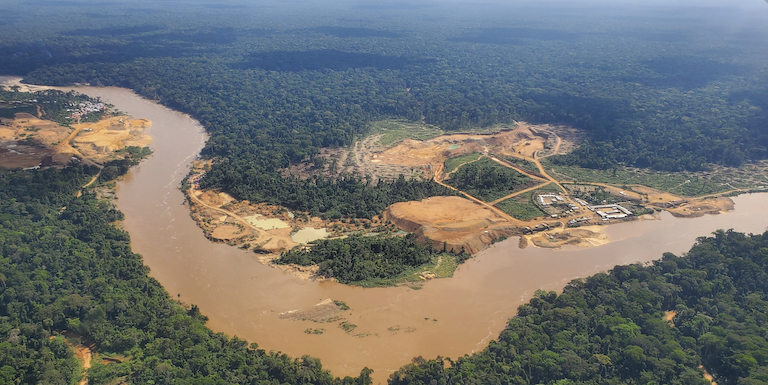
Impacts extend beyond the mining sites. Many birds, reptiles and mammals depend on riparian habitats. Mining along riverbanks destroys key habitat for a wide range of species. Deforested and degraded habitats are more prone to soil erosion, and soil sediments wash into rivers, silting up downstream ecosystems. Mercury — used to separate gold from ore — can leach into water sources, “biomagnifying” up aquatic food webs and causing neurological and developmental illness, and even death, in communities that depend on the river for food and drinking water. Yet miners and communities aren’t usually aware of the dangers of mercury contamination, according to a 2016 United Nations Environment Program report on artisanal gold mining in the DRC.
The population explosion around mining sites, particularly in the villages of Bandegayido and Bandesende along the National Road 4, may also be driving bushmeat consumption. Elephants, okapi, pangolins and many other key, threatened mammal populations in the park have been declining over the past 30 years. These declines, along with deforestation and the presence of miners, can make it harder for Indigenous Mbuti and Efe to hunt and access traditional foods.

There have also been allegations of violence, harassment and corruption associated with mining and poaching in the reserve, undermining the authority of eco-guards, disrupting conservation initiatives and impeding law enforcement.
According to local and international news outlets, in 2012, Mai Mai Simba rebels killed seven people, took numerous hostages and killed 13 captive okapi, reportedly in retaliation for a crackdown on mining and elephant poaching. In April 2020, a guard post was attacked following the evacuation of the illegal gold mining site at Bapela, according to UNESCO. In September 2020, two ICCN eco-guards reportedly were killed at the Adusa post. Most recently, in June 2023, an eco-guard was killed while patrolling an artisanal mining site in the central portion of the reserve.
Mapping issues
Complicating matters is a disagreement over the borders of Okapi Wildlife Reserve between the Cadastre Minier — responsible for issuing mining permits — and other institutions such as ICCN, WCS and UNESCO.
The borders of the reserve set out in the 1992 ministerial decree follow natural or geographic features. But on the Congolese Cadastre Minier (CAMI) website, the reserve boundaries are projected with a different aspect-ratio so the western and southern borders run arbitrarily through the forest, shrinking the reserve size and excluding the Muchacha mining site.

According to a 2022 UN Security Council Group of Experts report, the Cadastre Minier maintains that the borders were changed by a 2003 letter, but did not provide the Security Council Group with the letter despite numerous requests. In 2021, the ICCN seized 31 gold bars worth $1.9 million that allegedly came from the Kimia mining site at Muchacha inside the reserve. However, a military court in Bunia later upheld the borders of the reserve as depicted on the Cadastre Minier site. Kimia Mining Investment maintained that it owns mining research and exploration permits that cover the majority of the Muchacha mining site, according to the 2022 UN report.
In 2022, 205 Congolese civil society organizations called on the government to rescind the permits of Kimia mining and halt ongoing deforestation and pollution from mercury. Adams Cassinga, founder of the nonprofit organization Conserv Congo and one of the signatories of the open letter, says the intention was to draw international attention and put pressure on the Congolese government, but thus far no action has been taken.
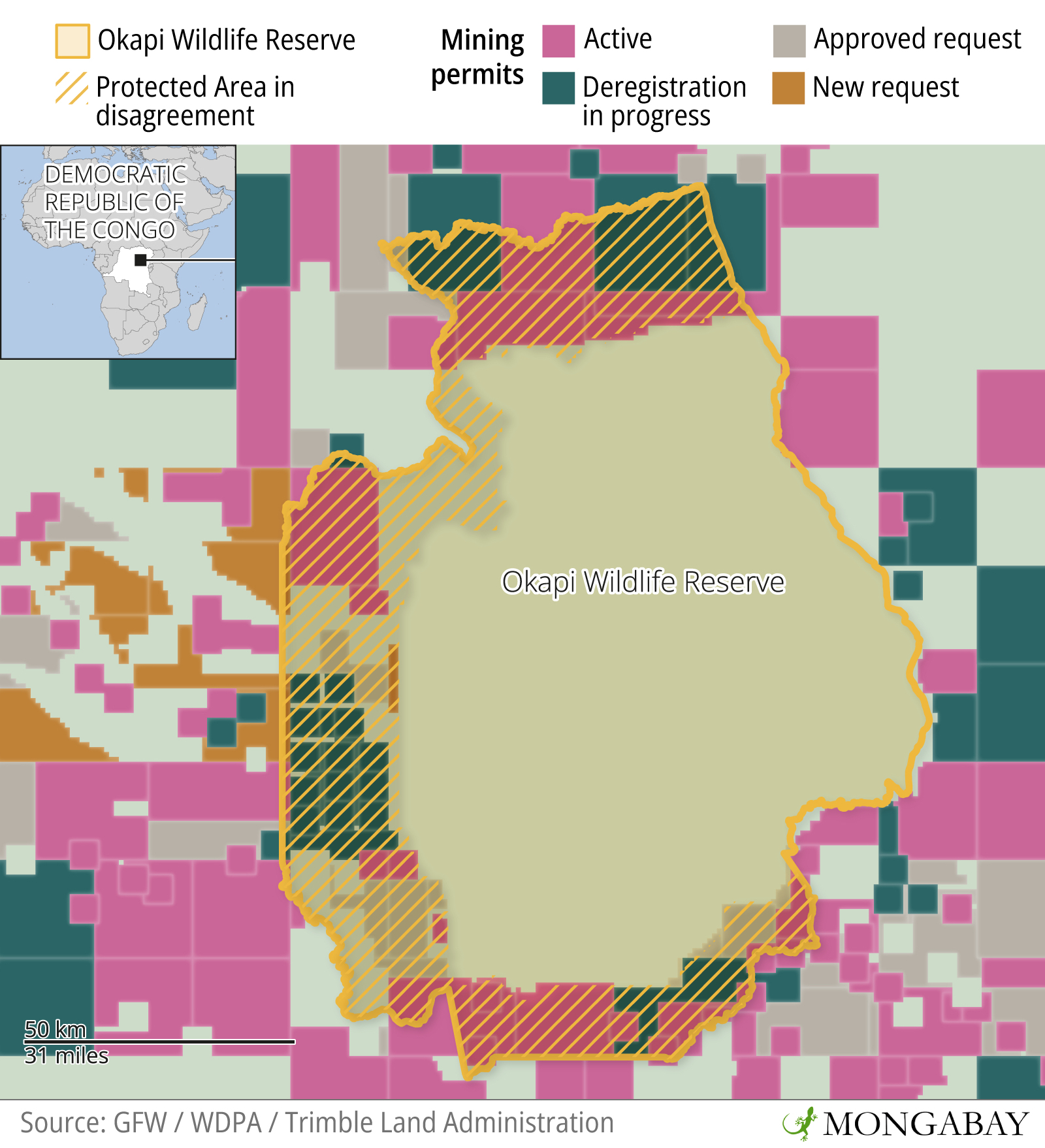
The disagreement over the borders of Okapi Wildlife Reserve — and the semi-industrial mining at Muchacha — needs to be resolved at the ministerial level, Lukas says. Representatives at WCS tell Mongabay that initial participatory workshops to demarcate the western boundary were held by WCS and ICCN in 2020, and that a joint commission with CAMI is being established.
The problem of poverty
Conservationists say artisanal mining also needs to be controlled, and efforts to shut down artisanal mining sites are ongoing, though not comprehensive. Lukas points out that closing new sites is more easily done before they become well established and satellite economies spring up. He also notes that it is important to maintain compassion and understand that poverty and displacement drive people to seek gold. But he points out that the miners and other outsiders don’t have the same relationship with the land as local communities.
“We’ve got communities [in the north] asking us to be part of the reserve because they see the protection that comes for their forest resources,” he says. Those resources include firewood, medicinal plants and hunting in certain seasons. “For local communities it’s an advantage. … For outsiders, they just want to exploit resources. They just want to cut it all down, tear up the earth and leave.”
Satellite imagery shows settlement expansion in the contested western portion of the Okapi Wildlife Reserve, as well as the proliferation of mining activity along the Ituri River. Imagery courtesy of Google Timelapse.
Currently the reserve is managed using three types of zones: agricultural and hunting zones near existing villages and a “zone intégrale” that is more strictly protected. These were agreed upon with local authorities, but the protection statute of the reserve doesn’t allow for a legal differentiation of those zones, explains biologist Terese Hart, who conducted the first study of the okapi and is now coordinator of the TL2 project in central DRC. She says the statute should be adjusted so the aims of having a more strictly protected core area can be enforced.
Artisanal miners — including those who have flocked to the booming villages of Bandisende and Bandigayedo from distant population centers — bring changes too. The agricultural zones around villages are generally respected, Lukas says; he tells Mongabay his team has worked hard with villagers to create incentives for sustainable agriculture within those zones. But, according to Berce Nsafuansa, program officer with the Okapi Conservation Project, outsiders don’t have the same long-term relationship with the land and may not respect guidelines. Many are agriculturalists and may cut down the forest to cultivate commercial crops such as cocoa, which is prohibited in the reserve.
To really understand the problem — and identify solutions — Peer Schouten, a senior researcher at the Danish Institute for International Studies and co-author of the 2022 University of Antwerp analysis and policy brief, says it’s important to look at the wider issues: poverty, conflict and the search for land. The DRC ranked 179 out of 191 countries on the UN’s Human Development Index in 2021, and more than 6 million people are internally displaced due to violence and insecurity.
“There’s not an easy story to tell,” he says. “The problem is that all these people are just seeking livelihoods. And you have this unused land. … How can you prohibit people who have no other livelihoods from seeking, you know, to get paid?”
Hope
Despite the ongoing challenges, it is apparent from satellite data that there are fewer deforestation alerts inside the reserve than in the surrounding area — and deforestation is 90% lower within the reserve than on the periphery, according to the WCS 2022 impact report.
Lukas also says that on a recent trip in July 2023, he was heartened to see that surveillance in the reserve has improved, and that the eco-guards are better equipped and highly motivated.

He also points out that across the Congo Basin, slash-and-burn agriculture is still the biggest threat . The Okapi Conservation Project works with villages in and around the reserve to promote sustainable agriculture and conservation of forest habitat with agro-forestry, education and community development initiatives. Deforestation to the east of the reserve is driven in part by cocoa farming (as well as migration), so WCS works with villages to promote sustainable cocoa production. As of November 2022, 70% of cocoa exporters in the region had joined the initiative, according to WCS.
“There is a positive side in that we’ve kept a lot of forest intact. We got camera traps out, and we get a lot of wildlife. We got elephants and okapi, bongo, antelope, forest buffalo. … We got some golden cats the other day. So we really have good wildlife where the forest is protected,” Lukas says. “And there are communities that are very protective of the forest. And they just really think it’s the way it should be.”
Citations:
Analysis and Policy Brief No. 49: Conservation, conflict and semi-industrial mining: the case of eastern DRC. (2022). Retrieved from University of Antwerp Institute of Development Policy website: https://medialibrary.uantwerpen.be/files/8518/ebe152c1-3166-4d07-86c7-3e13fb8cdefb.pdf?_gl=1*dh1gu8*_ga*MTAzODYyMTExLjE2OTI3NTI0OTI.*_ga_WVC36ZPB1Y*MTY5Mjc1MjQ5MS4xLjAuMTY5Mjc1MjQ5MS42MC4wLjA.&_ga=2.131542799.1046481147.1692752493-103862111.1692752492
Environmental assessment of mercury pollution in two artisanal gold mining sites in eastern Democratic Republic of the Congo. (2016). Retrieved from United Nations Environment Programme website: https://wedocs.unep.org/bitstream/handle/20.500.11822/22445/UNEP_DRCongo_ArtisanalGoldMining_2016.pdf?sequence=1&isAllowed=y
Annual Results Report: 2022 Dem Rep of the Congo. (2023). Retrieved from UNHCR website: https://reporting.unhcr.org/operational/operations/democratic-republic-congo
Banner image: Semi-industrial mining at Muchacha along the Ituri River, in the southwestern sector of the Okapi Wildlife Reserve, has caused deforestation and contamination of water sources. Image courtesy of WCS/ICCN.
Editor’s Note: This story is powered by Places to Watch, a Global Forest Watch (GFW) initiative designed to quickly identify concerning forest loss around the world and catalyze further investigation of these areas. Places to Watch draws on a combination of near-real-time deforestation alerts, automated algorithms and field intelligence to identify new areas on a monthly basis. In partnership with Mongabay, GFW is supporting data-driven journalism by providing data and maps generated by Places to Watch. Mongabay maintains complete editorial independence over the stories reported using this data. Sign up for GFW’s monthly email updates featuring these stories.
Feedback: Use this form to send a message to the editor of this post. If you want to post a public comment, you can do that at the bottom of the page.








